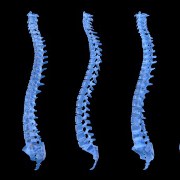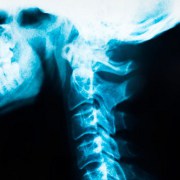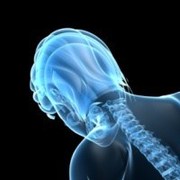 Photo: Getty Images
Photo: Getty Images
In North America, cervical spondylotic myelopathy is the most common type of spinal cord disorder in people older than 55, according to William F. Young, MD of Temple University Hospital. While the majority of patients are older than 50 years, the condition may develop in younger people.
Emory Healthcare pointed out that the age of onset can vary depending on congenital spinal cord narrowing. With cervical spondylotic myelopathy, patients experience compression of their spinal cord in their necks. This compression, which affects blood flow, impairs the function of the spinal cord.
Patients with cervical spondylotic myelopathy may have degeneration in the spinal cord, which affects the connective tissue, intervertebral discs, joints and ligaments. This degeneration occurs as people age, as well as from wear and tear.
For example, “with aging, the intervertebral discs dry out resulting in loss of disc height,” noted Young, adding that “this process puts greater stress of the articular cartilage of the vertebrae and their respective end plates.”
The ligaments that connect the muscles and the neck bones become stiffer. Some people may have a herniation of the discs, in which the material between two vertebrae in the spinal cord sticks out.
Besides the degeneration putting pressure on the spinal cord, growths called bone spurs can also contribute to the compression of the spinal cord. Emory Healthcare stated that bone spur, or osteophyte, formation occurs from the changes to the spine leading to a narrowing of the spinal canal. This narrowing also results in the posterior longitudinal ligament becoming thicker. For many patients with cervical spondylotic myelopathy, the compression occurs at the C4-C7 levels of the spinal cord.
Certain inflammatory diseases, such as rheumatoid arthritis, may cause cervical spondylotic myelopathy. People who have injuries to the neck may sustain damage to the spinal cord.
These types of injuries may occur with a motor vehicle accident, fall or contact sport. While not as common, congenital abnormalities of the vertebrae, tumors and infections may cause cervical spondylotic myelopathy, according to the American Academy of Orthopaedic Surgeons.
References
Young, W.F. “Cervical Spondylotic Myelopathy: A Common Cause of Spinal Cord Dysfunction in Older Persons.” American Academy of Family Physicians. 1 September 2000. Web. 21 December 2011
http://www.neuroanatomy.wisc.edu/selflearn/CSM.htm
American Academy of Family Physicians. Cervical Spondylotic Myelopathy. Web. 21 December 2011
http://familydoctor.org/familydoctor/en/diseases-conditions/cervical-spondylotic-myelopathy.printerview.all.html
MayoClinic.com. Cervical Spondylosis – Causes. Web. 21 December 2011
http://www.mayoclinic.com/health/cervical-spondylosis/DS00697/DSECTION=causes
Emory Healthcare. Cervical Spondylotic Myelopathy. Web. 21 December 2011
http://www.emoryhealthcare.org/spine/medical-conditions/cervical-spondylotic-myelopathy.html
American Academy of Orthopaedic Surgeons. Cervical Spondylotic Myelopathy. Web. 21 December 2011
http://orthoinfo.aaos.org/topic.cfm?topic=A00541
Reviewed Dec 21, 2011
by Michele Blacksberg RN
Edited by Jody Smith





Add a CommentComments
There are no comments yet. Be the first one and get the conversation started!